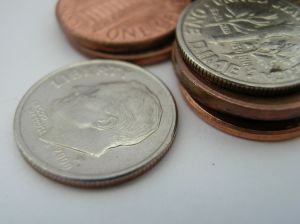 Babies have a tendency to put everything in their mouths. And while we, as parents, are diligent about baby proofing our homes, sometimes things get missed, such as a small toy from an older child, loose change that has fallen out of someone’s pocket, a stray piece of lint that looks particularly interesting, etc. While many of these objects may not be choking hazards, they still aren’t things you want you baby to ingest. Here are the most common household hazards that a baby might swallow and some information on whether or not you should start to panic.
Babies have a tendency to put everything in their mouths. And while we, as parents, are diligent about baby proofing our homes, sometimes things get missed, such as a small toy from an older child, loose change that has fallen out of someone’s pocket, a stray piece of lint that looks particularly interesting, etc. While many of these objects may not be choking hazards, they still aren’t things you want you baby to ingest. Here are the most common household hazards that a baby might swallow and some information on whether or not you should start to panic.
Coins
There isn’t a month that goes by where I don’t hear of a baby swallowing a coin or two. In fact, in a given year about 30,000 children visit the ER for injuries having to do with coins. The reaction by parents when a baby swallows a coin ranges from calling 911 to doing nothing. The most common coin swallowed is a penny. So what is the real scoop on swallowing coins? If your child does swallow a coin, the best thing to do is to call the pediatrician. If your child has difficulty breathing, call 911. For non-life-threatening coin swallowing, your child will probably receive an x-ray to confirm that the coin is not lodged in the esophagus. If it is, surgery may be required. If the coin has already reached the stomach, your doctor may advise you to watch your baby’s stools.
Craft materials and art supplies
With all of the bright colors, art supplies may just be too tempting for a baby to keep out of her mouth. Crayons and small beads are generally non toxic, although some small objects may have been recalled for excessive amounts of lead. Usually the object will pass through your baby’s system without any harm, but make sure to notify your pediatrician anyway. He may wish to perform a lead test to be safe.
Check back again for more common household swallowing hazards.
Mary Ann Romans writes about everything related to saving money in the Frugal Blog, technology in the Computing Blog, and creating a home in the Home Blog. Starting June 1st, don’t miss her articles in the Baby Blog. You can read more of her articles by clicking here.
Related Articles:

